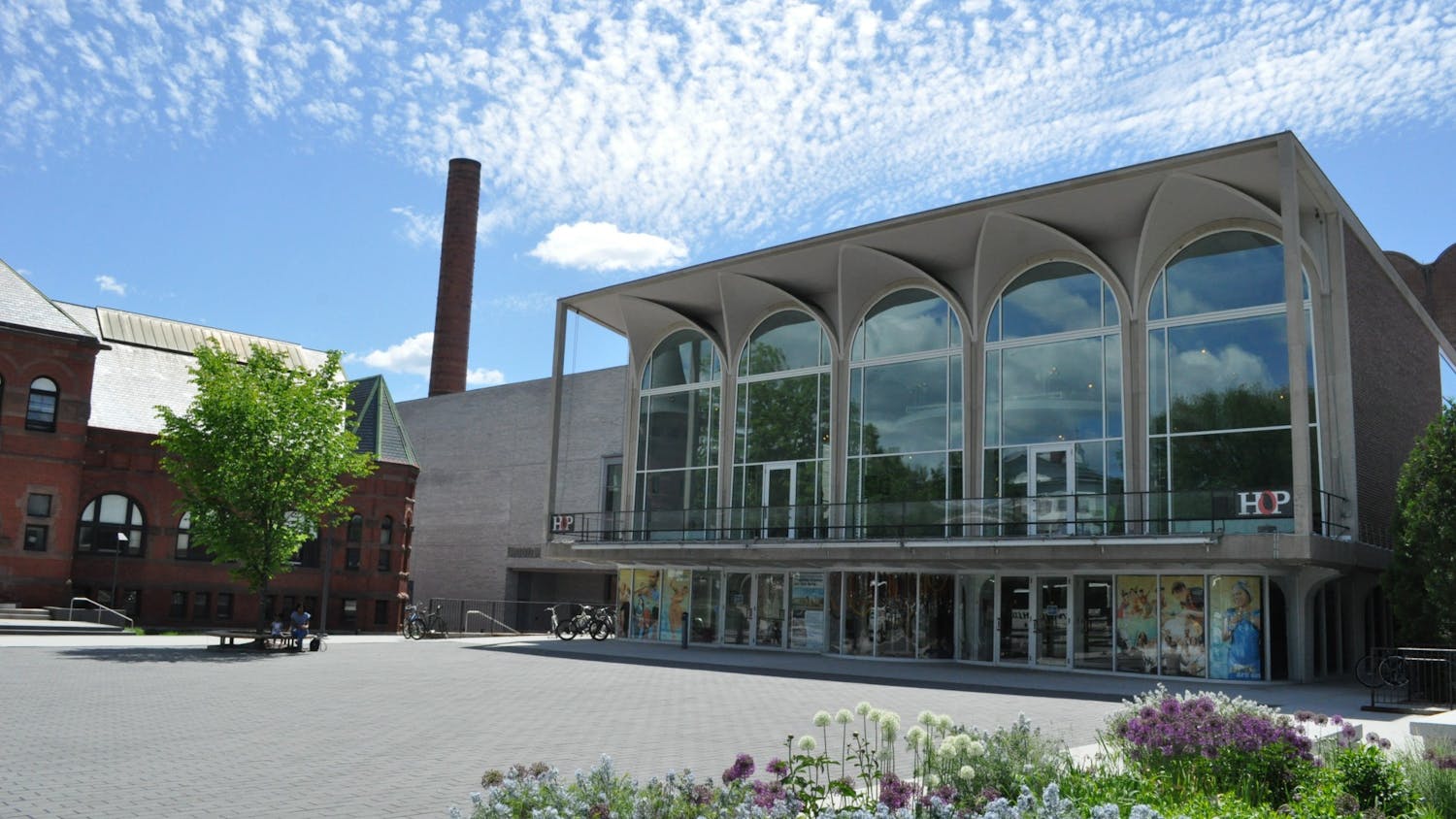"Most people are surprised when they first come in that there's music," Emerson said. "It contributes to the general warmth of the place."
The programs offered by the hospital include permanent installations, rotating exhibitions, creative arts specialists and live performances, according to the DHMC patient resource website.The creative arts program, which began seven years ago, offers one-on-one experiences for adult patients in the hospital with guest artists, such as Rebecca Gottesman, who focuses on visual art; Marv Klasse-Landis, who works with literary art; and harpist Margaret Stephens, who plays in the outpatient areas of the cancer center and at the bedside of inpatients, according to the website.
Klasse-Landis, in charge of the literary component of the creative arts program, said he believes bringing art into a hospital setting is beneficial for patients.
"For some people, the arts can really be transformative and really help them get in touch with and creatively communicate what their experiences are," Klasse-Landis said. "That creative act actually transforms the experience in a more positive way."
Elisabeth Gordon, who has served as the arts program coordinator at DHMC for 10 years, said she takes great pride in the program's accomplishments.
"We hope the arts can provide somewhat of an outlet or a diversion for [the patients]," Gordon said. "We really think it reminds them of the humanities, of the arts." The most visible component of the arts program is the local art that lines the walls of the hospital, displayed in various exhibitions. There are six spaces in the medical center where artwork can be displayed. The work is mostly temporary, and many pieces are on sale, ranging from $30 ceramic pendants to $1,500 paintings. One-fourth of all proceeds from sales help to fund the arts program, according to Gordon.
Deborah Steele, the manager of patient and family services at the Norris Cotton Cancer Center and the facilitator of many of the arts at DHMC, said she believes having art throughout the hospital greatly improves the atmosphere of DHMC.
"There's a definite resonance in looking at art that other people have made or listening to live music," Steele said. "Even if you just have 10 minutes, you can stop that stress cycle and relax."
As part of the program, the medical center plans an event they call "art rounds," when the art is changed in the hallways every three months, Gordon said.
"We have the artists come in and present their work," she said. "It's really fun people really like it."
Some of the pieces on display this month are those of Seth Chwast, a 25-year-old autistic artist whose work is currently on display along the North Mall of DHMC. Chwast who has appeared on the MSNBC "Today Show" and has had solo exhibitions in many hospitals around the country finds a therapeutic release through displaying his artwork, according to Chwast's website. His work serves as inspiration to patients and visitors at DHMC, Gordon said.
"We consistently get comments that speak about how important it was to have a visit from [an artist] who allowed the [patient] to not think about their cancer for an hour or two and think about the rest of their life," Steele said.
DHMC's arts program also prominently features musicians who volunteer around the hopsital on a regular basis.
"We have a whole core of performers we have a lute player, a violinist, two pianists," Gordon said. "We even had George Winston of the Tokyo String Quartet come in."
Frank Logan '52, another one of the volunteer pianists who has been playing at DHMC for 11 years, said he sets up his piano along the South Mall of the main rotunda and plays almost every day.
"It's very gratifying because in a place like this, which is so stressful, my playing helps to temper the atmosphere," Logan said.
The creative arts program is an integral part of the hospital, according to Steele.
"The arts allow people to feel their creativity," Steele said. "All of these times spent with our creative artists help [patients] feel more in touch with themselves. People say it makes them feel relaxed and optimistic."
Klasse-Landis said his work allows patients to express themselves through poetry or literature.
"I help people get something down on paper," Klasse-Landis said. "They talk to me, and I help them get their words down with a laptop. It might come out as a poem or a letter or a piece of prose."
In the future, the hospital hopes to expand its arts program even further, according to Gordon.
"We really try to involve the community as much as we can," Gordon said. "It's frustrating when people don't know what we have to offer."
The medical center has been actively trying to involve Dartmouth undergraduate students and arts professors in various programs at the hospital, according to Gordon. Overall, DHMC seems to be moving toward more of a collaborative effort with the College, she said.
"We've been talking about the idea of having a student-faculty show here," Gordon said. "We've wanted some studio art interns to get involved."
Whether through visual arts workshops, musical performances or exhibitions of local art, Gordon said DHMC is a unique display of how the arts can truly uplift a hospital.
"I think there's a sense of joy in creation," Steele said. "In creating through words or art materials or just listening to art people feel engaged with life."




